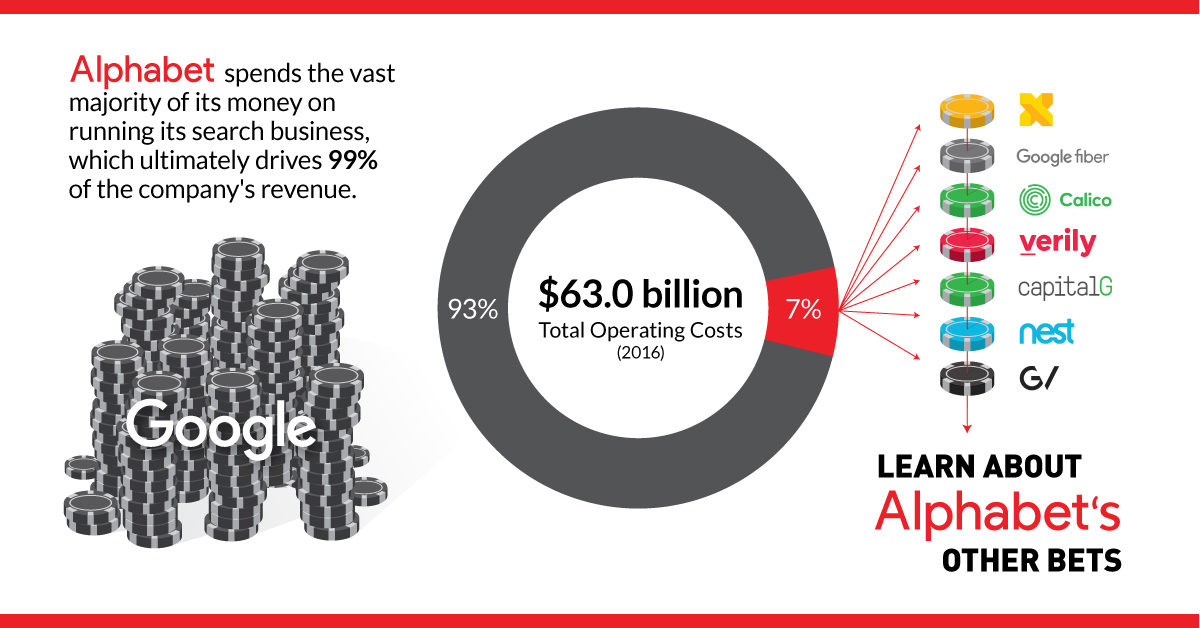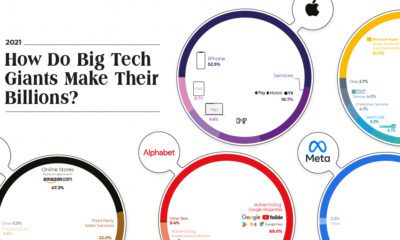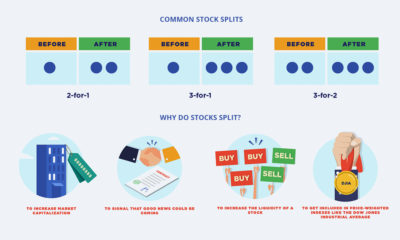Regardless of whether the policy remains in place today, one of Google’s most famous management philosophies has been the “20% rule”. Legend goes that especially in Google’s earlier days, employees were encouraged to spend 20% of their time working on new initiatives that could potentially benefit Google outside of their regular workflows, teams, and projects. This meant there was time to explore new ideas or to challenge existing status quos within the organization. It’s a seemingly arbitrary and systematic way to spur innovation, but it has worked well over the years. The 20% rule has apparently led to new products such as Gmail, Google News, and AdSense, which are all important aspects of Google’s business today. It should not be surprising then, that Google’s parent company Alphabet also takes a systematic approach to innovating outside of its core search business. By making ambitious “Other Bets” and keeping investors up-to-date with their own segment on the company’s financial statements, Alphabet shows both commitment and discipline in finding its next multi-billion dollar game-changer.
“Other Bets”
In 2016, Alphabet was a cash machine. The company raked in $19.5 billion of profit off of a whopping $87.4 billion of revenue. The only challenge? If you do the math, 99% of that revenue comes from Google, which currently dominates digital advertising with a 41% share of the entire market. Wisely, the company does not want to put all of its eggs in one basket – and it spends about 7% of its annual operating costs on facilitating “Other Bets”. Here is what else Alphabet is up to: Google Fiber Google Fiber aims to provide internet at super speeds across the United States. Rollout has been costly though and only nine locations have been launched since 2010. Calico Labs Calico Labs is made up of elite scientists with $1.5 billion worth of funding to research the causes of aging and how to expand the human life span. Nest Founded by two former Apple engineers, Nest produces smart-home technology such as sensor-driven, Wi-Fi-enabled thermostats. Verily Verily’s mission is to reinvent healthcare using groundbreaking technology and data, such as a glucose-sensing smart contact lens for diabetics. GV GV, formerly known as Google Ventures, is Alphabet’s venture capital investment arm, making strategic investments in startup companies in fields such as life sciences, agriculture, and robotics, to name a few. CapitalG CapitalG makes investments that are “return-driven”, focusing on growth stage companies, such as Stripe, Airbnb and SurveyMonkey. X X uses breakthrough technology as a radical solution to big problems. Its most famous projects are its self-driving car and Google Glass.
Which “Other Bets” are Paying Off?
“Other Bets” generated $809 million in revenue in 2016, which is a 82% increase over 2015. This revenue came mostly from Nest, Fiber, and Verily. Nest, which aims to dominate the smart home of tomorrow, was acquired for $3.2 billion in 2014. And while it does generate revenue for Alphabet, it has been viewed mostly as a disappointment even from the company’s perspective. Verily is Alphabet’s business in life sciences, and is apparently profitable already. The unit partners with pharmaceutical companies to make money, and it will also eventually move forward with human clinical trials on its smart contact lens product. Lastly, Fiber has been rolled out in nine cities across the United States to provide ultra-fast broadband speeds for internet and television. In recent news, Fiber has laid off employees, while halting many further expansion plans. on But fast forward to the end of last week, and SVB was shuttered by regulators after a panic-induced bank run. So, how exactly did this happen? We dig in below.
Road to a Bank Run
SVB and its customers generally thrived during the low interest rate era, but as rates rose, SVB found itself more exposed to risk than a typical bank. Even so, at the end of 2022, the bank’s balance sheet showed no cause for alarm.
As well, the bank was viewed positively in a number of places. Most Wall Street analyst ratings were overwhelmingly positive on the bank’s stock, and Forbes had just added the bank to its Financial All-Stars list. Outward signs of trouble emerged on Wednesday, March 8th, when SVB surprised investors with news that the bank needed to raise more than $2 billion to shore up its balance sheet. The reaction from prominent venture capitalists was not positive, with Coatue Management, Union Square Ventures, and Peter Thiel’s Founders Fund moving to limit exposure to the 40-year-old bank. The influence of these firms is believed to have added fuel to the fire, and a bank run ensued. Also influencing decision making was the fact that SVB had the highest percentage of uninsured domestic deposits of all big banks. These totaled nearly $152 billion, or about 97% of all deposits. By the end of the day, customers had tried to withdraw $42 billion in deposits.
What Triggered the SVB Collapse?
While the collapse of SVB took place over the course of 44 hours, its roots trace back to the early pandemic years. In 2021, U.S. venture capital-backed companies raised a record $330 billion—double the amount seen in 2020. At the time, interest rates were at rock-bottom levels to help buoy the economy. Matt Levine sums up the situation well: “When interest rates are low everywhere, a dollar in 20 years is about as good as a dollar today, so a startup whose business model is “we will lose money for a decade building artificial intelligence, and then rake in lots of money in the far future” sounds pretty good. When interest rates are higher, a dollar today is better than a dollar tomorrow, so investors want cash flows. When interest rates were low for a long time, and suddenly become high, all the money that was rushing to your customers is suddenly cut off.” Source: Pitchbook Why is this important? During this time, SVB received billions of dollars from these venture-backed clients. In one year alone, their deposits increased 100%. They took these funds and invested them in longer-term bonds. As a result, this created a dangerous trap as the company expected rates would remain low. During this time, SVB invested in bonds at the top of the market. As interest rates rose higher and bond prices declined, SVB started taking major losses on their long-term bond holdings.
Losses Fueling a Liquidity Crunch
When SVB reported its fourth quarter results in early 2023, Moody’s Investor Service, a credit rating agency took notice. In early March, it said that SVB was at high risk for a downgrade due to its significant unrealized losses. In response, SVB looked to sell $2 billion of its investments at a loss to help boost liquidity for its struggling balance sheet. Soon, more hedge funds and venture investors realized SVB could be on thin ice. Depositors withdrew funds in droves, spurring a liquidity squeeze and prompting California regulators and the FDIC to step in and shut down the bank.
What Happens Now?
While much of SVB’s activity was focused on the tech sector, the bank’s shocking collapse has rattled a financial sector that is already on edge.
The four biggest U.S. banks lost a combined $52 billion the day before the SVB collapse. On Friday, other banking stocks saw double-digit drops, including Signature Bank (-23%), First Republic (-15%), and Silvergate Capital (-11%).
Source: Morningstar Direct. *Represents March 9 data, trading halted on March 10.
When the dust settles, it’s hard to predict the ripple effects that will emerge from this dramatic event. For investors, the Secretary of the Treasury Janet Yellen announced confidence in the banking system remaining resilient, noting that regulators have the proper tools in response to the issue.
But others have seen trouble brewing as far back as 2020 (or earlier) when commercial banking assets were skyrocketing and banks were buying bonds when rates were low.
















